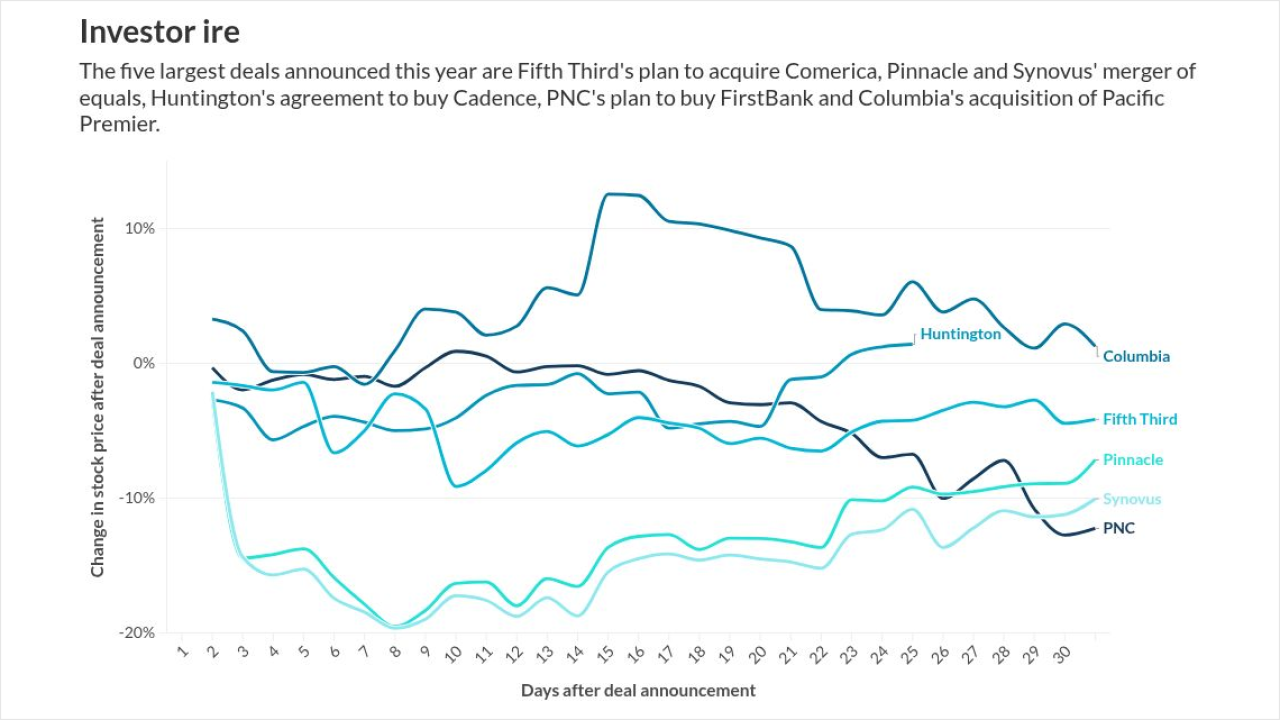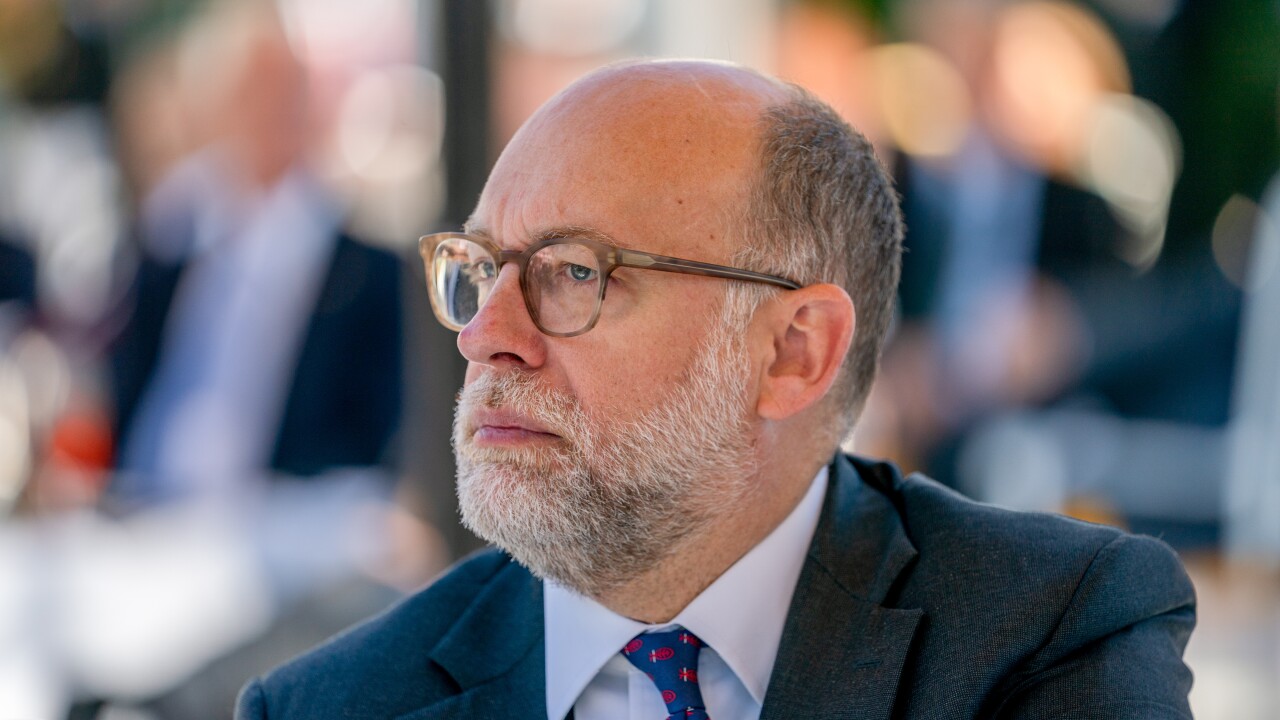
UPDATE: This article includes comments made during Bank of America's earnings call and comments from an analyst's note.
The $2.4 trillion-asset financial giant — which, like its big-bank peers, is constrained by a law that prevents it from controlling more than 10% of the nation's total deposits — can't buy a medium-size or larger bank without exceeding that limit. So it's been
"There are possibilities" to do small deals in areas such as technology, but "organic growth is the reality," Moynihan said on a call to discuss the bank's second-quarter results. "We're continuing that push — the 'expansion markets,' we call them — and we're seeing success there."
Since 2016,
At the same time,
In 2021,
Moynihan framed the company's investments in new markets as a redeployment of capital.
"It's more of an expense redeployment question and a human being redeployment question … than it is a capital deployment question, frankly," he said.
Read more about Bank of America here:
Beginning in the third quarter, it plans to increase its dividend by 8% to 28 cents per share, pending board approval. The increase follows favorable results from this year's stress tests.
For the second quarter,
Revenue of $26.5 billion rose 4% year over year, but was below analysts' $26.7 billion estimate.
Net interest income rose 7% year over year to $14.7 billion, marking the fourth consecutive quarter of sequential growth. That's a plus for
On Wednesday, the company stood by its
Expenses of $17.2 billion rose 5% year over year, reflecting revenue-related spending in areas such as wealth management, sales and trading and investment banking, Alastair Borthwick,
Read more about bank earnings here:
As for the rest of the year, expenses should "flatten out from here and potentially move a touch lower" if the bank sees lower costs related to its markets business, Borthwick said. Lower expenses combined with better net interest income could lead to positive operating leverage in the two remaining quarters of the year as well as an improved efficiency ratio, he added.
The idea of "flattening out from here" caught the attention of some analysts on the call, including those who had expected a 2%-3% increase in expenses year over year. The outlook could now mean an increase of 3.5%-4% for the full year, Truist Securities analyst John McDonald said in a research note.
"This reflects some continued slippage in the 2025 expense outlook, feeding into investor angst around this" heading into earnings season, McDonald wrote.
Both Moynihan and Borthwick said that employee headcount, a big factor in spending, should be largely steady.
"At the end of the day, we've got stability in terms of head count, in terms of third-party rents and all that stuff is sort of flattening out. So we feel good about that," Moynihan said.





